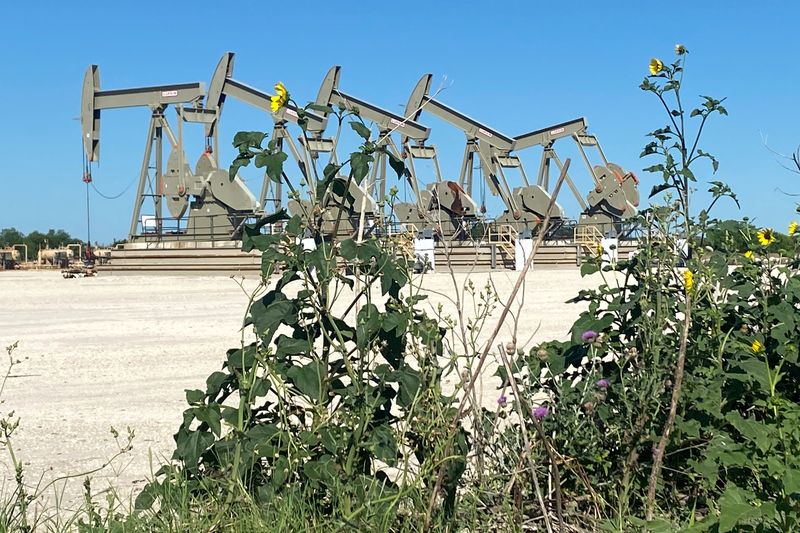By Alex Lawler
LONDON (Reuters) - OPEC has cut its forecasts for U.S. shale oil supply several times as factors including investor caution curb expansion, making the non-conventional supply less of a worry for the producer group in its decisions on oil policy.
On Tuesday, OPEC trimmed its forecast for 2023 growth in U.S. tight oil, another term for shale, to 780,000 barrels per day. The group kept its 2022 forecast unchanged at 590,000 bpd, having steadily cut the figure from 880,000 bpd in July.
(Graphic: OPEC forecasts of U.S. tight oil production growth, https://fingfx.thomsonreuters.com/gfx/mkt/zgvobbkwqpd/Pasted%20image%201671014304505.png)
U.S. shale oil drillers over the last two decades helped to turn the United States into the world's largest producer. But the gains in output are slowing and executives warn of future declines.
The Organization of the Petroleum Exporting Countries pumps about a third of the world's oil and its view on shale growth is important, since output from non-OPEC allied countries is factored into its output policy decisions as part of the wider OPEC+ group.
Shale's slowdown, some in the industry say, gives OPEC more influence over total global oil supplies. The chief executive of U.S. producer Hess (NYSE:HES) last month said OPEC was "back in the driver's seat" as the top swing producer.
"It is becoming more predictable and less expansible than it was five years ago," said Gary Ross, CEO of Black Gold Investors and a veteran OPEC watcher, referring to shale.
OPEC+ in October made its biggest output cut since the pandemic took hold in 2020. While OPEC or OPEC+ decisions to cut output in the past have drawn warnings that higher prices and lower OPEC+ output would encourage U.S. shale producers to pump more, officials have not voiced such concerns recently.
"Certainly as a factor of importance it fell a few places," an OPEC+ source said, declining to be identified by name.
OPEC's Secretary General Haitham Al Ghais, in comments to Reuters in August, attributed the slower shale growth to factors including an increase in investor caution, less funding and the impact of evironmental, social and governance (ESG) issues on the industry.
"We are seeing signs that the phenomenal growth that happened maybe three, four, five years ago is not taking place, thus far at least," he said.
Flaring concerns, licensing permits and supply chain issues were obstacles for shale, Al Ghais said.
Rapid growth in shale has previously caused problems for OPEC, as when it helped to create a supply glut during 2014-2016. The oversupply eventually prompted the creation of OPEC+, which began to restrain output in 2017.
While OPEC has lowered its shale forecasts, the group is watchful.

"So we share the consensus that we will see less growth than in the past," Al Ghais said. "However, the U.S. shale industry is resilient. They have proven this over and over again, and we know there can be surprises.
"The U.S. shale patch is a constantly evolving part of this business. We continue to monitor it very closely."